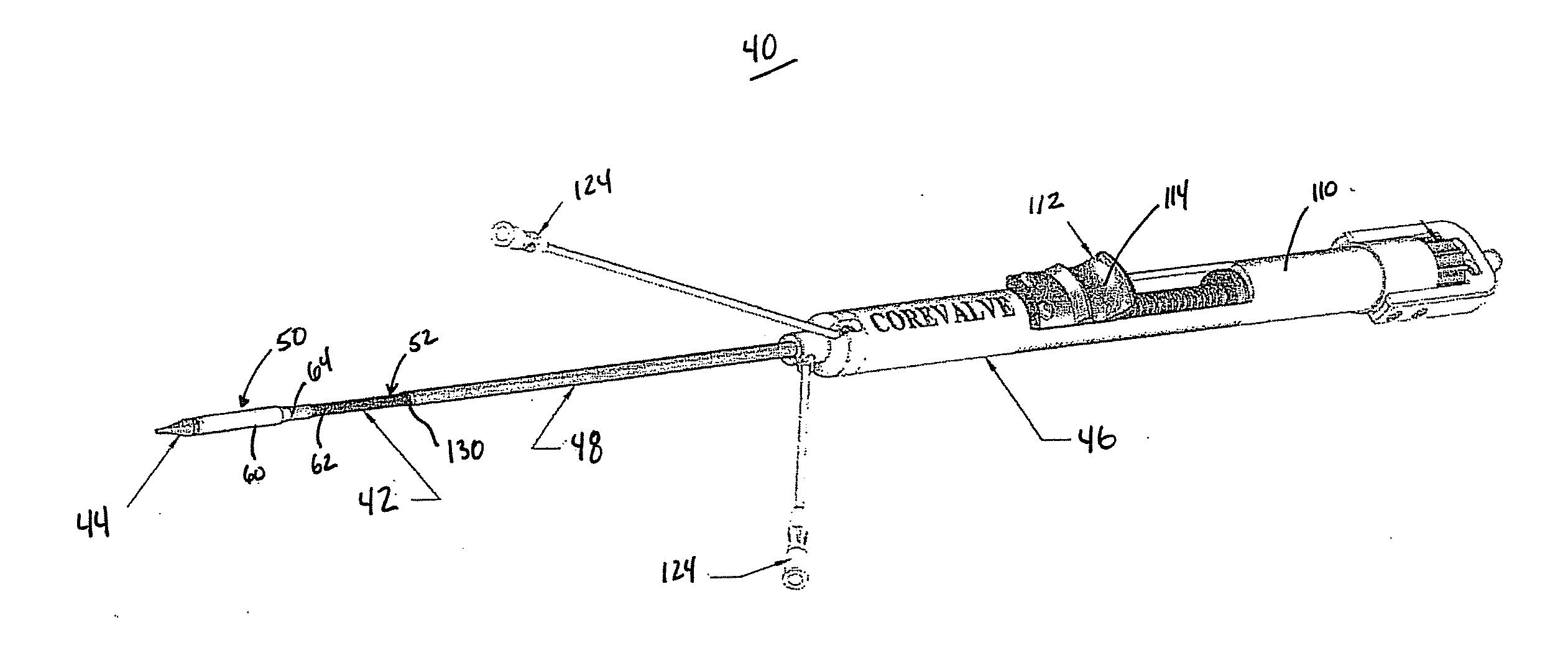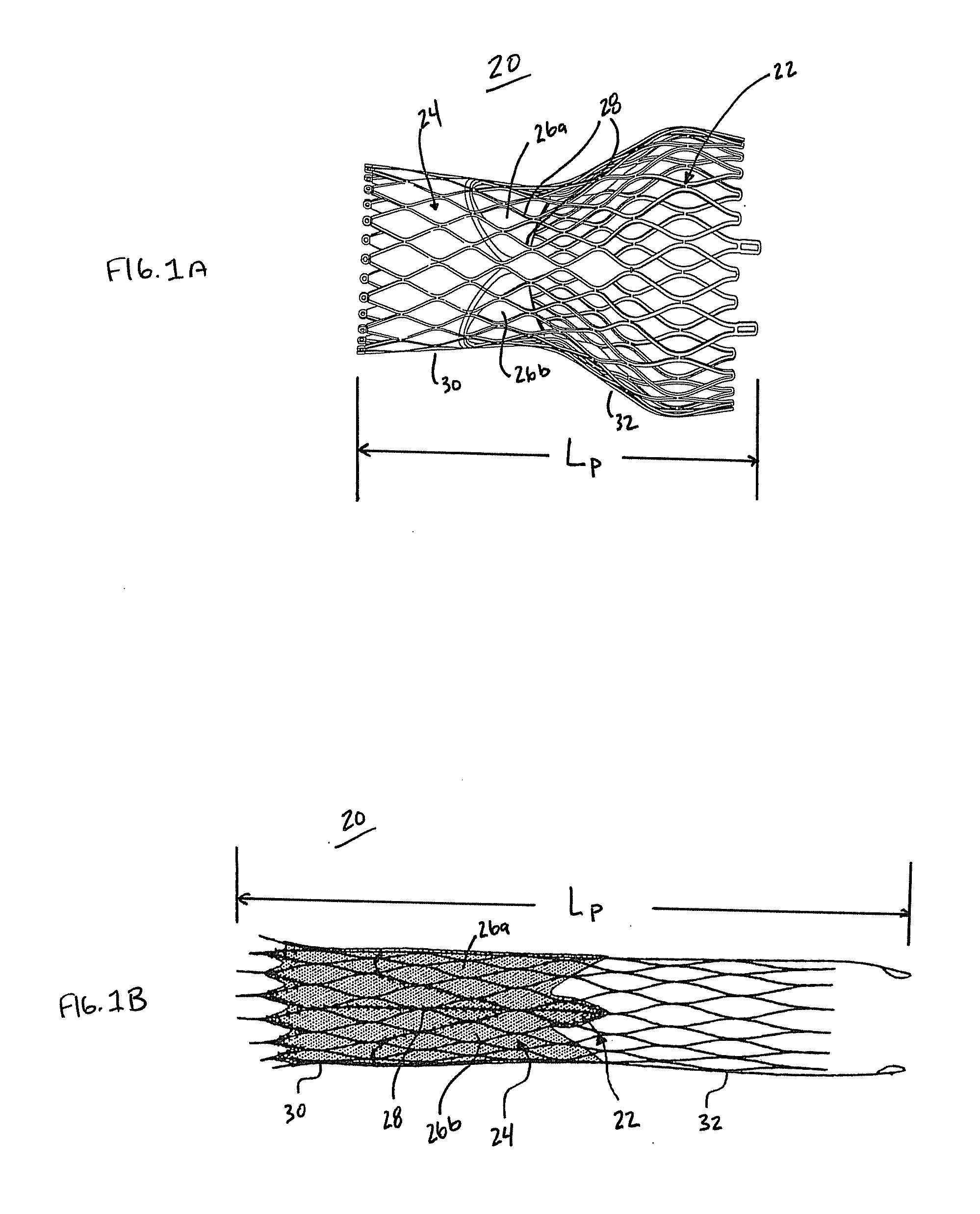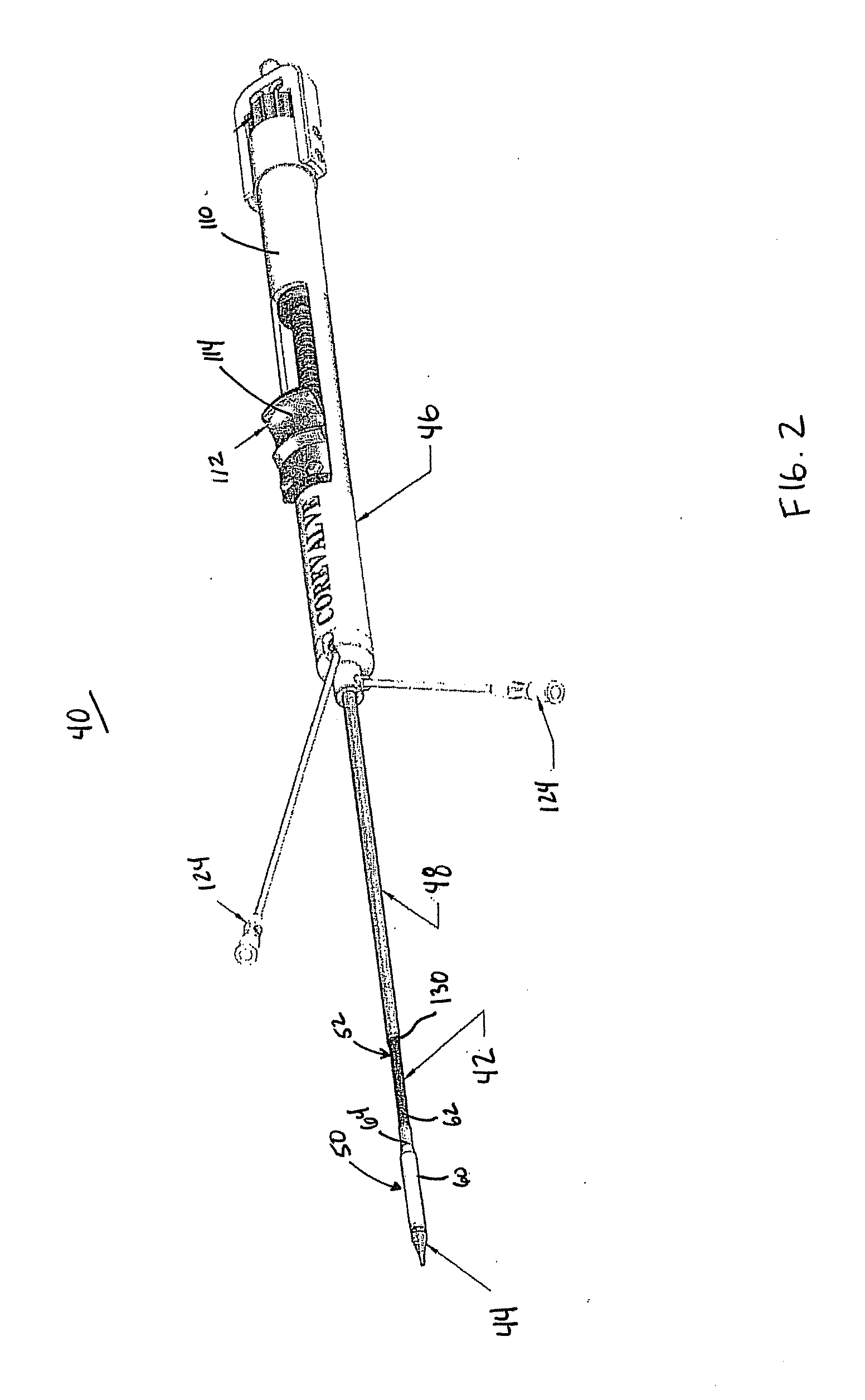Transcatheter Heart Valve Delivery System With Reduced Area Moment of Inertia
a delivery system and transcatheter technology, applied in the field of systems and methods for percutaneous implantation of heart valve prosthesis, can solve the problems of inability to achieve mixed results, inability to achieve significant patient trauma and discomfort, and inability to achieve significant clinical benefits, etc., to achieve sufficient conformability, reduce the area moment of inertia, and the radial stiffness of the capsule distal segment is greater.
- Summary
- Abstract
- Description
- Claims
- Application Information
AI Technical Summary
Benefits of technology
Problems solved by technology
Method used
Image
Examples
Embodiment Construction
[0024]As referred to herein, the prosthetic heart valve as used in accordance with the various devices and methods may include a wide variety of different configurations, such as a bioprosthetic heart valve having tissue leaflets or a synthetic heart valve having a polymeric, metallic, or tissue-engineered leaflets, and can be specifically configured for replacing any heart valve. Thus, the prosthetic heart valve useful with the devices and methods of the present disclosure can be generally used for replacement of a native aortic, mitral, pulmonic, or tricuspid valves, for use as a venous valve, or to replace a failed bioprosthesis, such as in the area of an aortic valve or mitral valve, for example.
[0025]In general terms, the prosthetic heart valves of the present disclosure include a stent or stent frame maintaining a valve structure (tissue or synthetic), with the stent having a normal, expanded arrangement or state and collapsible to a compressed arrangement for loading within t...
PUM
 Login to View More
Login to View More Abstract
Description
Claims
Application Information
 Login to View More
Login to View More - R&D
- Intellectual Property
- Life Sciences
- Materials
- Tech Scout
- Unparalleled Data Quality
- Higher Quality Content
- 60% Fewer Hallucinations
Browse by: Latest US Patents, China's latest patents, Technical Efficacy Thesaurus, Application Domain, Technology Topic, Popular Technical Reports.
© 2025 PatSnap. All rights reserved.Legal|Privacy policy|Modern Slavery Act Transparency Statement|Sitemap|About US| Contact US: help@patsnap.com



